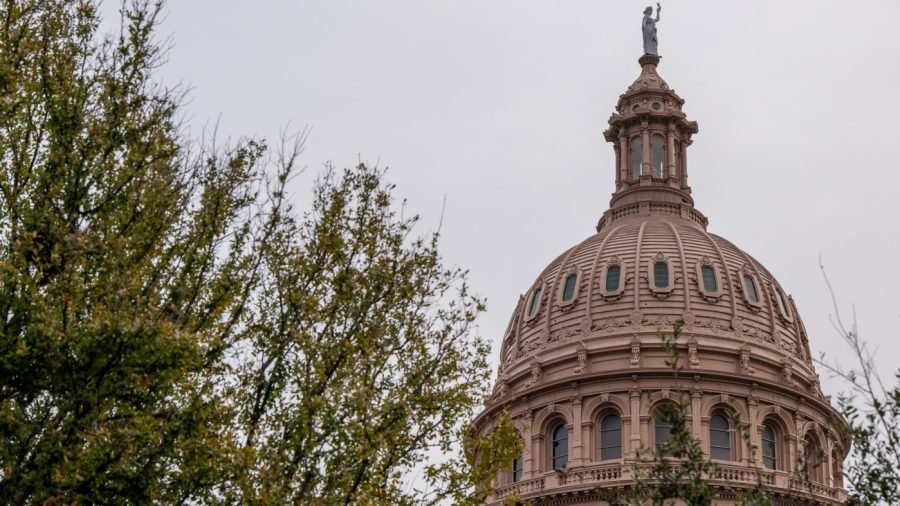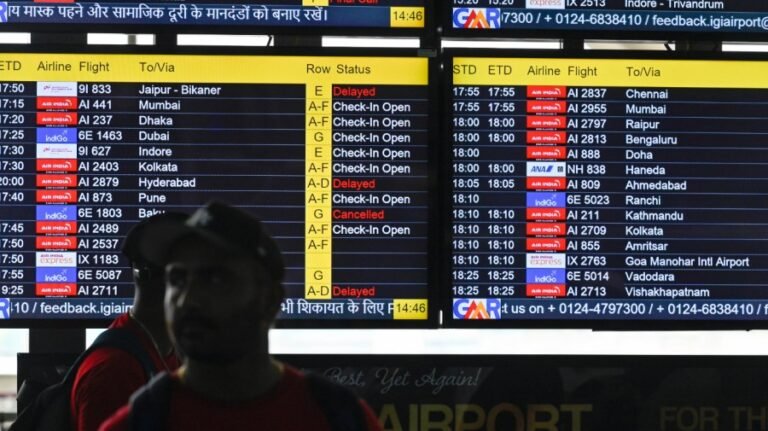
Texas Republicans introduced a proposed set of new House lines on Wednesday, putting the party one step closer to gaining five seats in 2026.
The new proposed map is likely to most directly impact lawmakers situated near or in the Dallas-Fort Worth area, Austin, Houston and the southern border, as Republicans look to net five seats in next year’s midterms.
Texas’s decision to redistrict its lines has also started a domino effect, prompting other red and blue states to consider redrawing their own lines in the middle of the decade. The redistricting war will have implications for which party holds the House majority next year.
Here are the states to watch in the redistricting battle heading into 2026:
Texas
President Trump is vying to have Republicans pick up a number of seats in the Lone Star State as Republicans brace for an unfavorable midterm environment. Texas lawmakers are convening for a special session over 18 agenda items, including redistricting.
GOP lawmakers introduced a new map on Wednesday that would potentially help give their party more of a cushion next year.
The new map would create five new House seats that would have voted for Trump by double digits in last November’s election, giving Texas Republicans the opportunity to grow their majority from 25 House members to 30.
The new proposed map most immediately impacts Democratic Reps. Marc Veasey in the Dallas-Forth Worth area, Julie Johnson in the Dallas area, Greg Casar and Lloyd Doggett in the Austin area, Al Green near Houston, and Vicente Gonzalez and Henry Cuellar near the southern border.
Ohio
Ohio lawmakers are required to redraw their House map this year after the 2022 maps failed to receive bipartisan support.
The Buckeye State has a congressional delegation of 10 House Republicans and five House Democrats. Two of the most vulnerable Democrats who could see their House districts get even tougher are Reps. Marcy Kaptur and Emilia Sykes in Ohio’s 9th and 13th Congressional Districts, respectively.
Rep. Greg Landsman (Ohio) is another Democrat who could see his district redrawn more competitively in Ohio’s 1st Congressional District. Republicans face a tougher road to making his district more difficult to hold since the state constitution prohibits lawmakers from breaking up Cincinnati.
California
California Gov. Gavin Newsom (D) is weighing several options for how the Golden State might do its own midcycle redistricting in response to Texas’s move to redraw its maps.
California Democrats could put the issue before voters through a ballot measure.
An alternative path would be to work through the state Legislature. Newsom has noted in the past that the state constitution is silent on potential midcycle redistricting, which could offer lawmakers a potential loophole to redraw their maps.
Newsom, who met with Texas Democrats on Friday, said any move would be “predicated on Texas moving forward.”
New York
New York lawmakers are taking steps toward allowing the state to redistrict midcycle if need be.
New York State Assembly member Micah Lasher (D) and state Sen. Mike Gianaris (D) are proposing legislation that would allow the Empire State to redraw House lines in response to another state undergoing midcycle redistricting.
New York also uses a redistricting commission to craft its maps, but it’s subject to the Legislature’s approval.
Democrats are contending with a major hurdle. In order for the state constitution to be amended, the effort would need to be passed in two consecutive sessions, after which voters would then weigh in on the ballot measure.
That would mean Democrats wouldn’t be able to redraw their House maps ahead of 2026.
Florida
The Florida Supreme Court recently upheld a challenge to the state’s current map, which broke up former Rep. Al Lawson’s (D-Fla.) district into three that are represented by Republicans.
But Gov. Ron DeSantis (R) suggested, despite that win, the state should consider drawing new House maps.
“I think if you look at that Florida Supreme Court analysis, there may be more defects that need to be remedied apart from what we’ve already done,” DeSantis said last week.
“I also think the way the population has shifted around Florida just since the census was done in 2020, I think the state was malapportioned,” he continued. “So I do think it would be appropriate to do a redistricting here in the middecade.”
Missouri
Missouri Republican leaders say they’re getting pressure from the Trump White House to undertake midcycle redistricting in their state as Republicans look to offset potential losses in the 2026 midterms and as Democratic states mull redrawing their own lines in response to Texas.
Some Republicans have said they support redrawing the lines, while others are reluctant to revisit the issue.
New Jersey
Gov. Phil Murphy (D) said earlier this month when asked about redistricting in New Jersey that it was “too early to make any definitive statement about it.” But he left the door open to the possibility.
“No news to make, other than I will quote Sean Connery from ‘The Untouchables’: ‘Never bring a knife to a gunfight,'” Murphy said. “So, if that’s the way we’re going, we’re from Jersey, baby, and we won’t be laying down.”
Like New York and California, New Jersey also uses a redistricting commission to craft its maps and would likely require a constitutional amendment in order for lawmakers to redraw the maps.
Illinois
Gov. JB Pritzker (D) met with Texas legislators last week and also left the door open to potential midcycle redistricting. Illinois does not use a redistricting commission and only requires its lawmakers to pass its maps through the Legislature — offering an easier pathway with fewer logistical hurdles to do redraw their House lines.
“Everything is on the table,” Pritzker said on Friday. “We’ve got to preserve democracy.”
Maryland
Maryland House Majority Leader David Moon (D) introduced a bill that would allow the state to pursue midcycle redistricting if another state adopts new House lines in the middle of the decade.
Maryland operates similar to Illinois in that maps only need to be drawn and approved by state legislators. A spokesperson for Gov. Wes Moore (D) told The New York Times last week that the governor would “continue to evaluate all options.”
Indiana
Republicans are also considering potential redistricting in Indiana, though it’s unclear if a similar push will take place in the Hoosier State.


